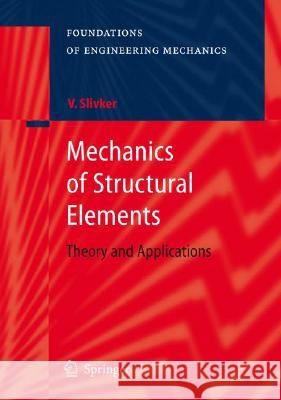Mechanics of Structural Elements: Theory and Applications » książka
Mechanics of Structural Elements: Theory and Applications
ISBN-13: 9783540447184 / Angielski / Twarda / 2006 / 787 str.
The presentment should be as simple as possible, but not a bit simpler. Albert Einstein Introduction The power of the variational approach in mechanics of solids and structures follows from its versatility: the approach is used both as a universal tool for describing physical relationships and as a basis for qualitative methods of analysis 1]. And there is yet another important advantage inherent in the variational approach the latter is a crystal clear, pure and unsophisticated source of ideas that help build and establish numerical techniques for mechanics. This circumstance was realized thoroughly and became especially important after the advanced numerical techniques of structural mechanics, first of all the finite element method, had become a helpful tool of the modern engineer. Certainly, it took some time after pioneering works by Turner, Clough and Melos until the finite element method was understood as a numerical technique for solving mathematical physics problems; nowadays no one would attempt to question an eminent role played by the variational approach in the process of this understanding. It is a combination of intuitive engineer thinking and a thoroughly developed mathematical theory of variational calculus which gave the finite element method an impulse so strong that its influence can still be felt. It would be too rash to say that there are few publications or books on the subject matter discussed in this book."











